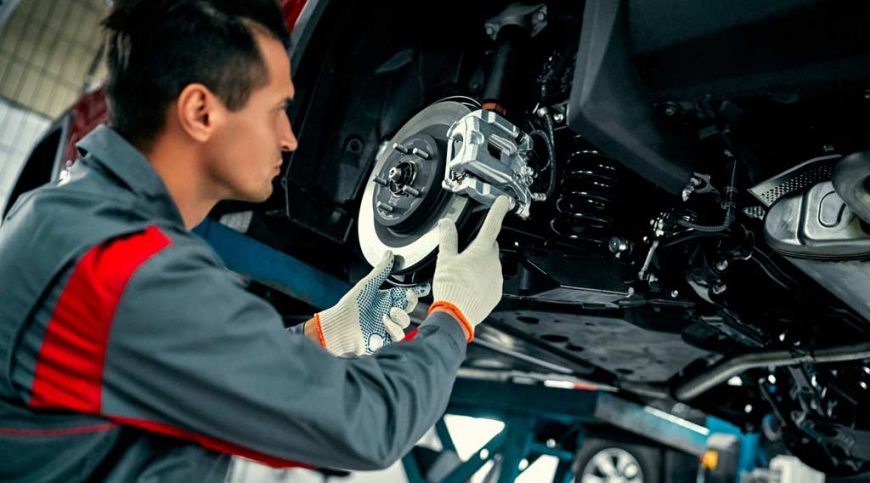Auto Brake Maintenance Tips
Your car’s brakes are one of the most important systems, yet brake parts wear out regularly. As part of seasonal auto maintenance, learn simple ways to inspect your auto brake system for worn parts and troubleshoot any problems so you can stay safe on the road.
Troubleshooting Auto Brake Issues
When brakes are in good condition, they operate well without making noises, like squealing. You can stop easily without needing to press the brake pedal to the floor.
If your brakes make a grinding noise when you press the pedal, they are seriously worn. In this case, skip the troubleshooting and head straight to the auto repair shop.
When your brakes feel spongy or soft, or when you hear other noises while braking, troubleshoot the issue.
First, check your car’s brake fluid container. Low levels of brake fluid can cause braking problems. By topping off the fluid levels, you may be able to fix the problem.
If things still aren’t right, try a test drive. As you drive down the street, pump the brake pedal a couple of times. This may fix the issue.
If pumping the brake pedal doesn’t resolve it, drive down the block and come to a full stop. Pay attention to how long it takes the car to stop. Listen for brake noises and watch for a vibrating steering wheel or a drift when you brake. Once you can describe the symptoms, take your car to the mechanic, let them know what you’ve been experiencing, and get it fixed by a professional.
Replacing Brake Pads
If you can change your tires, you can replace your brake pads.
Pick up brake pads that fit your vehicle’s make and model from your local auto parts shop. Using your jack, jack up the car, remove tire lug nuts using the tire iron, and pull off the wheel. This exposes the brake caliper. Take the bolt out of the brake caliper and push up on the caliper to expose the brake pad, which is held in place with retaining clips. Pull off the retaining clips, then pull off the brake pad.
Push the new brake pad into place, then press the retaining clips in place. They will snap when they are in place. Use the tube of grease included in your brake pad kit to grease the brake pad clips, which prevents squeaks.
Before you can fit the brake caliper over the brake pads, you’ve got to push the brake pistons back in place, so they clear the brake pads. Use a hard object, like a piece of scrap wood, to push the pistons past the brake pads, then attach the brake caliper and bolt. With everything back in place, you can reattach the wheel.
With these tips, you can keep your car’s brakes in good condition, respond to any problems, and avoid the danger that comes with driving with bad brakes.

